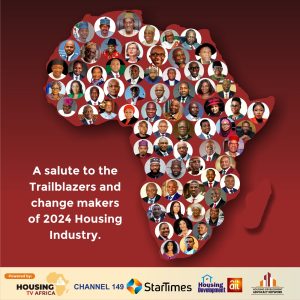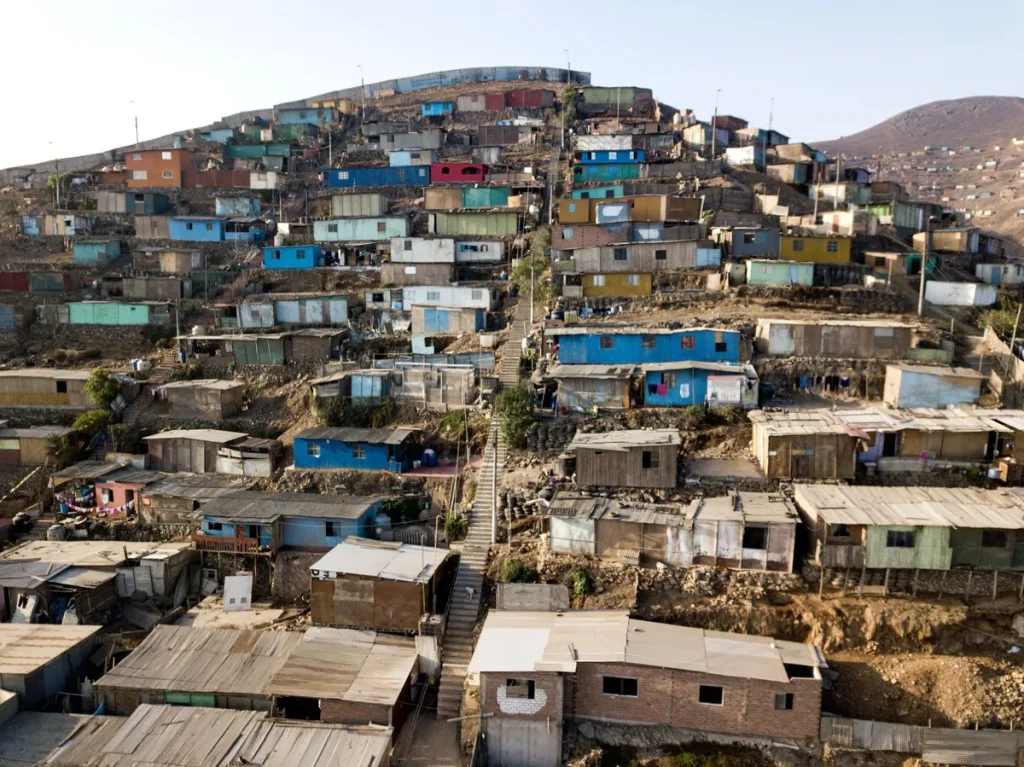When Alejandro Velásquez recently used a job-search website to look for work, he was asked to locate his house on a digital map. He couldn’t do it, because his house didn’t appear on it — he lives in La Vega, a slum district of Caracas, Venezuela’s largest city. He added a relative’s address, but all the job options were far from home. His neighborhood, like thousands of slum communities in the global south, is barely represented in maps.
Often, these areas are depicted in the official information systems of city governments as empty polygons named “informal zones” or “areas of development.” More than 1 billion people live in these areas of the world’s cities, according to the United Nations, and their numbers have been growing as urbanization trends continue. But severe information gaps keep much of this landscape hidden: Unlike formal areas, slums might not have their streets, services and buildings mapped on platforms such as Google Maps.
“People who live in these communities are left behind because where they live is not represented on digital maps,” says Nikolai Elneser, an urban planner and data analyst who heard Velásquez’s story while doing social work with an NGO in La Vega and decided to create a mapping project for the neighborhood with students from Simón Bolívar University in Caracas. He and members of the community. In a world that is increasingly more dependent on the internet to provide goods and services, “not appearing in these platforms means not having access to many of the benefits of urban life and development,” he says.

According to the human rights group Provea, around 180,000 people live in La Vega, an area that suffers constant water shortages and has been hard hit by Venezuela’s Covid-19 outbreak. The district has become notorious for clashes between gangs and state security forces, who have also been recently accused of committing massacres against civilians in the area.

Working with local guides, Elneser and his team spent weeks walking every street and alley in La Vega’s San Miguel district, tracking their paths with smartphones. The project, which the students informally called Mapeo San Miguel, added five miles and 34 local businesses and service providers to OpenStreetMap, an online open-source mapping platform that can be edited by users, like Wikipedia. The group also took notes in their walks, recording the material and quality of the streets as well as how the neighbors used the paths and how the roads got their names.
“Many humanitarian and developmental organizations base their work on the information that’s available on these platforms,” says Elneser. “The places that are not mapped are not receiving the support they could need. Even ambulances and firefighters might take longer to get to the destination.”
In an effort to fill information gaps, the Humanitarian OpenStreetMap Team (HOT), an international NGO dedicated to open mapping for developmental and humanitarian purposes, has launched and helped dozens of similar projects around the world through map data uploaded to OpenStreetMap. One of its projects is Missing Maps, a collaboration of 17 NGOs led by HOT alongside Doctors Without Borders and the American and British Red Cross. HOT has also developed Tasking Manager, a tool to divide a larger mapping project into smaller tasks that can be completed by multiple contributors with a common goal. “The mapping that we are doing is really geared towards humanitarian impact, development and social causes,” says Gihan Hassanein, HOT’s senior communications manager.

In 2017, for example, HOT collaborated with the Ugandan Bureau of Statistics and the NGO MapUganda to map refugee settlements that had popped up in Uganda following the arrival of more than a million refugees from civil-war-stricken South Sudan and the Democratic Republic of Congo. The project, which received support from the U.S. State Department and was supported by dozens of volunteers, sought to map the services available to refugees and provide NGOs with better data to improve their coordination, says Deogratius Kiggude, the project’s manager. In 2020, MapUganda used drones to map the Nakivale refugee settlement near the border with Tanzania to plan future public infrastructure and map ethnic clusters in the informal camp.
Other HOT projects focus on housing rights. In Namibia, for example, the group initiated a mapathon project with the Shack Dwellers Federation of Namibia (SDFN), a network of hundreds of community savings groups that pool funds to buy land and secure better housing and services for residents of informal areas across the country. The mapping project has supplied the SDFN with data to improve the investments of each savings group. “The SDFN is a poor people’s organization,” says Florian Marembo, a member of the SDFN. “These platforms of OpenStreetMap have helped the youth gain knowledge and understand the importance of quality data.”

Information revealed in digital mapping can be used in indirect ways to improve the social conditions of slums. Map Kibera centers on a Nairobi district that’s home to a quarter of a million people; it seeks to hire young people from the settlement to act as OpenStreetsMap data collectors while also teaching them job skills. The project also provides printed maps of Kibera to the community, as many residents lack mobile phones or internet access. Some maps direct users to Kibera’s small low-cost private schools; community groups and local elected officials have successfully used these maps to help advocate for more educational resources. Similarly, charitable projects have used the Map Kibera’s water sources map to see what areas lack access to clean water.
“Informal settlements tend to be ignored and pushed around,” says Erica Hagen, co-founder and trustee of Map Kibera. “It’s quite difficult to move things in the direction the actual residents want, as their rights are not very well protected.”

Mapping informal settlements can also build bridges between NGOs and the public and private sectors. In Peru, for example, the urban-tech startup i.mappin collects data from slums in Lima and other parts of the country to empower residents and encourage companies and government organizations to develop projects in the area. By creating ties with local communities through charitable NGOs, i.mappin has managed to map the vast shantytowns that climb the hills outside Lima , filling information gaps and assisting local utility providers with planning water and sanitation projects.
“Studying downtown Lima isn’t the same as studying a slum,” says architect Estefanie Quispe Salas, who co-founded i.mappin alongside Alessandra Rodriguez.
To celebrate the bicentennial of Peru’s independence this year, i.mappin launched an initiative called 200 Projects for Peru, a digital “proposal bank” inspired by a similar effort pioneered by Sergio Fajardo, former mayor of Medellín, Colombia. The bank allows researchers, scholars and students to upload infrastructural and social projects for informal settlements that private companies and governmental institutions can then bring to life. So far, 172 ideas have been contributed. These could be crucial in a country where at least half a million households have no access to electricity. The hope, says Quispe Salas, is that the effort can build a transformative link between the region’s poorest people and the public institutions that can often ignore them. “We want to join forces with the Ministry and say: We can do it.”
